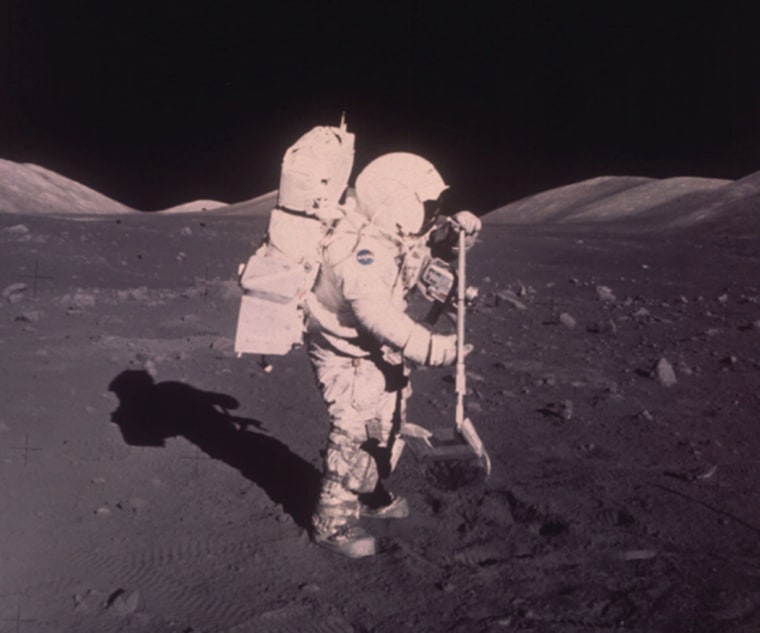One of the most enduring mysteries stemming from the Apollo moon missions is why rocks brought back to Earth for analysis are magnetized.
There's no magnetic field on the moon today and scientists suspect it had always been too small to form a core like Earth's that could generate a field by the flow of liquid metal.
That left just one theory to account for lunar magnetism — successions of short-lived fields caused by shock waves from meteoroid impacts.
Last week, a team of researchers at the Massachusetts Institute of Technology delivered a magnetic history of samples from one of the most ancient and pristine rocks in the Apollo collection. The finding rules out the theory of magnetization from impacts and suggests that the only other plausible explanation is that the moon, though small, did indeed have a liquid metal core.
"This rock was heated up only twice in its history," said MIT graduate student Ian Garrick-Bethell, lead author of a study published in Science. "When rocks cool, they lock in the magnetic fields around them. We found two magnetized events in its history."
Neither event happened quickly, such as what would be the case with a short-lived magnetic field stemming from an impact, Garrick-Bethell told Discovery News.
"Impacts that create (magnetic) fields are transient," he added. "They don't last long, not more than a day."
Samples of the rock, estimated to be 4.2 billion years old, show that the rock cooled twice in its history, first for millions of years and a second time for thousands of years.
The rock, retrieved by the Apollo 17 astronauts during the final foray to the moon in 1972, also shows no physical or mineralogical signs of being physically altered by impact events.
"It's possible that the moon formed a core. We don't really have enough data to say with any certainty," said Bill Bottke, a planetary scientist with Boulder, Colo.-based Southwest Research Institute.
The finding suggests other small bodies, such as asteroids, may have or may have had liquid metal cores that generate magnetic fields as well.
"If we know that a dynamo was supported on a body as small as the moon, it tells us that dynamos may be elsewhere," said Garrick-Bethell. "It's a process operating on a scale not previously realized."
The research also raises a new question for scientists to ponder: If the moon had a magnetic field, why did it die off?
